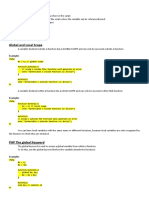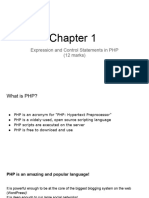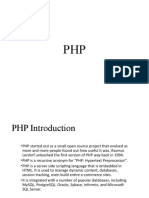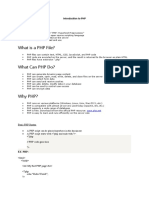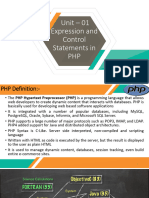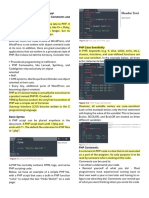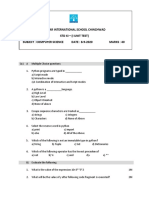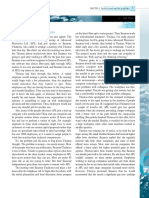0% found this document useful (0 votes)
13 views28 pagesUnit1 PHP
The document provides a comprehensive overview of PHP syntax, including how to write PHP scripts, declare variables, and understand variable scope. It covers PHP data types, operators, constants, control structures like switch statements and loops, as well as handling forms and arrays. Additionally, it explains various aspects of PHP programming, making it a useful resource for both beginners and experienced developers.
Uploaded by
nivethaelumalai13Copyright
© © All Rights Reserved
We take content rights seriously. If you suspect this is your content, claim it here.
Available Formats
Download as PDF, TXT or read online on Scribd
0% found this document useful (0 votes)
13 views28 pagesUnit1 PHP
The document provides a comprehensive overview of PHP syntax, including how to write PHP scripts, declare variables, and understand variable scope. It covers PHP data types, operators, constants, control structures like switch statements and loops, as well as handling forms and arrays. Additionally, it explains various aspects of PHP programming, making it a useful resource for both beginners and experienced developers.
Uploaded by
nivethaelumalai13Copyright
© © All Rights Reserved
We take content rights seriously. If you suspect this is your content, claim it here.
Available Formats
Download as PDF, TXT or read online on Scribd
/ 28


